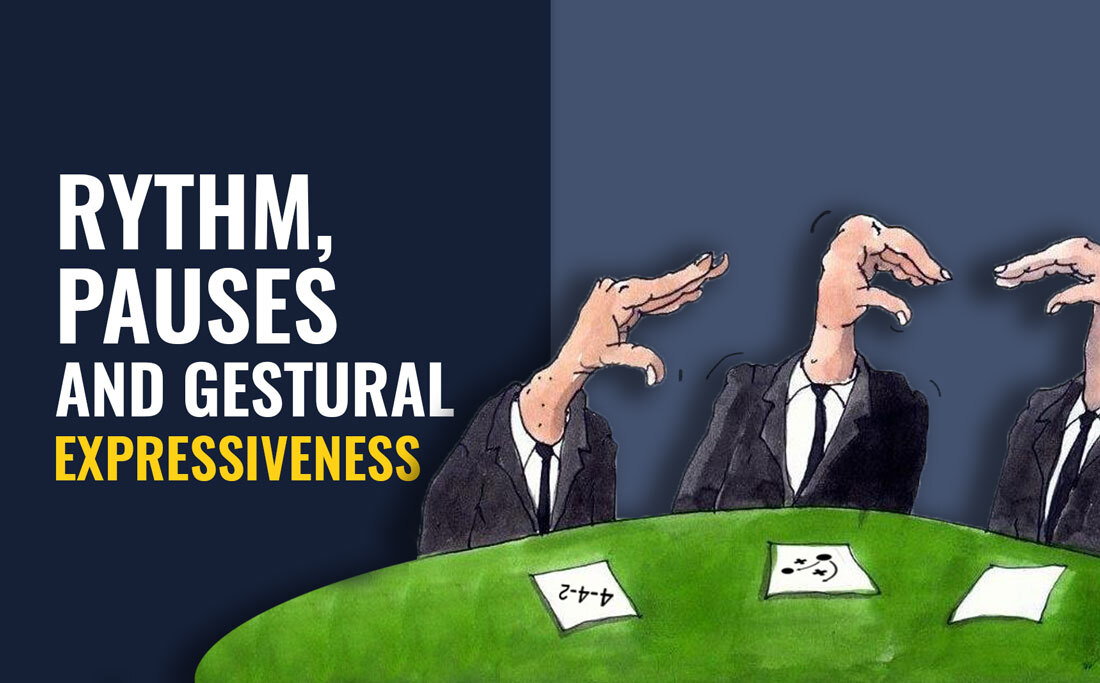Rythm, pauses and gestural expressiveness
Goal

|
In this article we'll see how a correct use of non verbal elements could facilitate clear communication and help players focusing on what we communicate |
It's obvious nowadays that communicating does not only mean transmitting information.
It's a continuous interweaving of psychological, emotional and social aspects that change and influence each other.
I would like to reflect together on how our way of talking, and in particular our pauses, filler words and gestures we make, can facilitate or hinder communication, conveying confidence and concentration that are so important for performance.
As usual, I'd like to start from a practical example.
Let's remember, for a moment, when we were younger and we were the athletes listening to a coach's speech. We may remember examples like coach X, who waved their arms up and down when speaking and could never stand still. Or teacher Y, who got on your nerves by saying “practically” every five words! Or even coach Z, who ended all their speeches with “it's easy!” and all you could think was “then do it yourself!”. Then there was a teacher who made these long pauses when speaking, so boring... Examples like these are many.
Now we probably smile thinking about it, and our players will do it too one day, thinking back. But what do these ways of communicating say about us? How do they make us feel? How much do they help us?

Talking too fast and using too many filler words (basically, well, literally, you know... including colorful phrases that I cannot write here but have a negative impact on communication) can distract your kids, who are “bewildered” by the same words repeated over and over again. These words interrupt your phrases, and can upset, amuse or distract the team. It's the same as a drop that constantly falls from a faucet, or a ticking clock in the background while you are trying to focus. When you start noticing it, it's the end for you! You will hear it as if there are no other noises, and it will become loud and unnerving!
 It's the same for filler words, pauses, coughing, throat-clearing and so on.
It's the same for filler words, pauses, coughing, throat-clearing and so on.Even gestures can help us reinforce contents and direct people's attention; but when gestural expressiveness becomes too much, almost theatrical, it can unnerve our listeners or even confuse them.
Coherence between verbal and non verbal communication is also important. Sometimes coaches talk about the left leg but mimic the gesture with the right leg, or they want you to turn clockwise while they are turning anti-clockwise. It's confusing, isn't it?
Communication should always be clear, simple, coherent.
Often we are not conscious of how and how often we use certain words, of how we use hand gestures and what we communicate to our players.
It could be useful asking a colleague if they noticed something, or even videotape ourselves while talking during a meeting. This can give us a feedback on how we communicate and how to improve!
Maybe we can find automatisms that, with great effort, we can change.
































































